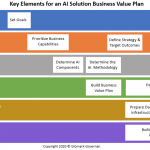
Digital Transformation
The Cloud, mobile devices, mobile apps, and the Internet of Things (IoT), have created a new digital era.
Consumers and market conditions are rapidly changing, hence the businesses’ strategies and processes must adapt to these changes. Organizations are experiencing a digital transformation and a disruption in all business processes, as they rely more and more on IT each day.
Proactive IT Management
On the other hand, IT – which was often considered a support department for business areas – is now at the center, and a critical element of business value creation. For the last decade, IT has had the role of a “service provider”, who is meant to understand the needs of its customers (the business areas), and provide services that meet their needs and expectations; however, this is rapidly changing! IT and the business can no longer work separately; now the customer of both entities is the same: the end user.
For this reason, IT and business areas must proactively work as partners to collaborate and agree on customer needs, and make decisions together, in order to fulfill the mission for which all organizations exist: creating value for the end-customer through innovation and the digitalization, and disruption of all business processes!
Dynamic IT Management Frameworks
But, are IT organizations really ready to bear this burden?
Management frameworks such as ITIL (for Service Management), COBIT (for Governance), and other quality standards have helped IT leaders understand their role, define their priorities, and define the roadmap for the future. However, the challenge is now growing bigger, since now it’s not only about having processes for ensuring consistent outputs that ultimately enable outcomes for the customer, or aligning the IT strategy with the business strategy; now it’s about creating value in a dynamic way from and through IT.
IT Management Using Two-Modalities
Business cycles are shorter and many initiatives need to be implemented (from idea to execution) in months in many cases, thus creating the need for what is commonly known as a Two-Speed-IT, which consist of two management modalities for the execution of initiatives: A traditional speed for implementation, and a fast and agile speed.
In other words, IT management and value creation using two-modalities is now the main concern of organizations’ C-level executives; and it seems that the guidelines provided by the most common management frameworks, that have been useful for years, now fall short in helping CIOs overcoming the current challenges; mainly by not operating in a dynamic mode.
The Future of IT Management and Frameworks
In this new digital era, IT has now more responsibility for the overall business success. Most enterprise’s initiatives depend on IT’s success, and many times initiatives must be completed before the time-to-market opportunity for the business expires (and with limited resources!). Because business cycles are shorter now and more dependent on IT, so IT’s response to the customers’ changing demands must be faster and more dynamic; IT executives must expand their vision and adopt a more enterprise-wide focus. The objective? IT value creation with two modalities.
Creating value through IT may sound easy, as a generic requirement for all IT organizations. But, do IT organizations, and moreover CIOs, know HOW TO enable two modalities of business value through IT? Are they using a trial-error approach? Or are they planning ahead and building strategies and updating their frameworks, like ITIL, to practically enable and ultimately realize value for the relevant stakeholders? That’s something that only time will tell.
Are you using ITIL for building strategies and IT framework?




Comments by Ruben Melendez